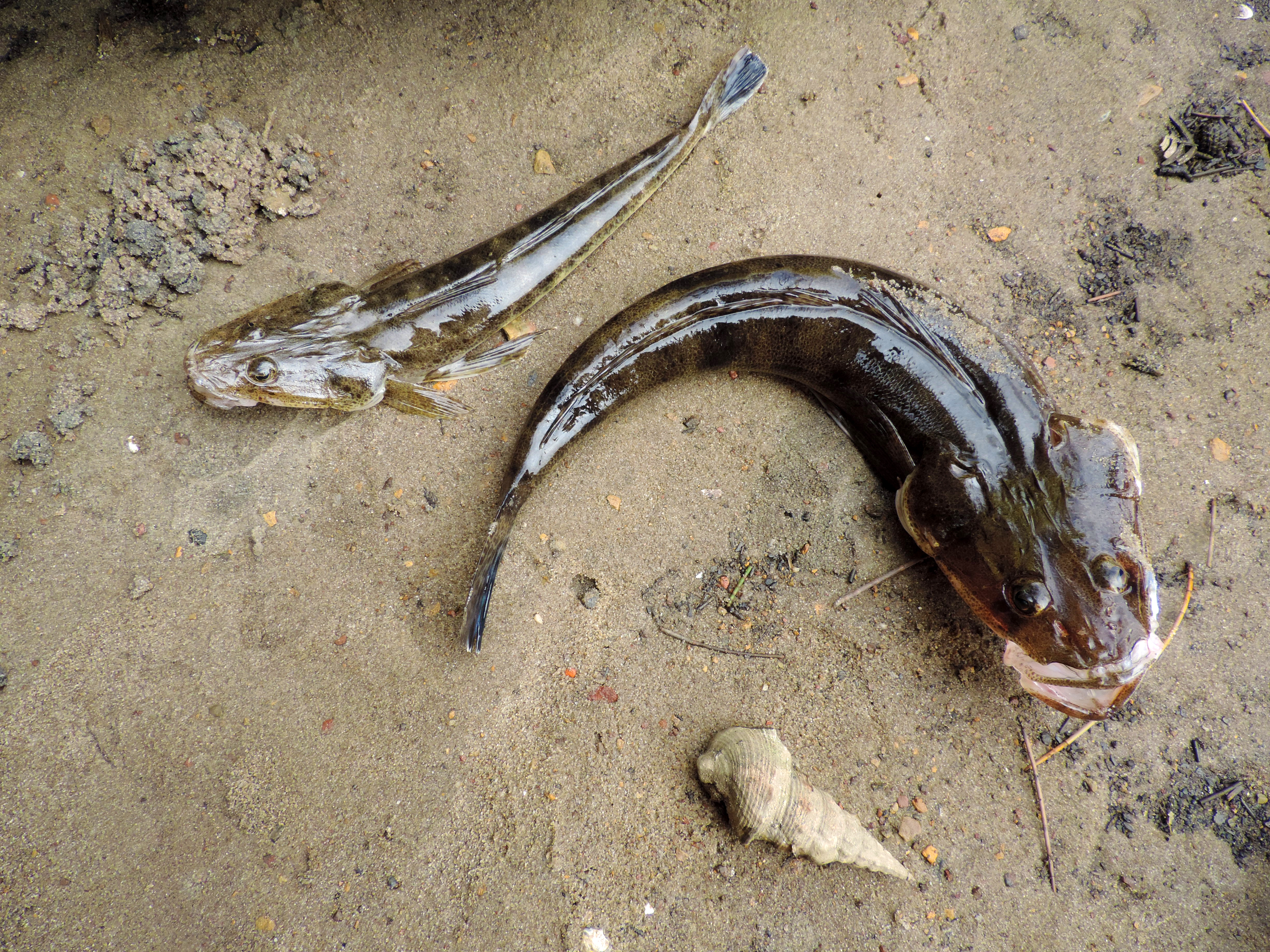Dusky flathead
(Platycephalus fuscus)

Description
Platycephalus fuscus, the dusky flathead or black flathead, (literally translating from Ancient Greek as "flat-head dusky") is a large predatory fish and the largest member of the family Platycephalidae. Dusky flathead are a largely estuarine species and are found in estuaries, estuarine lakes and coastal bays on the east coast of Australia, from Cairns in Queensland to the Gippsland Lakes in Victoria. They occur over sand, mud, gravel and seagrass and can inhabit estuarine waters up to the tidal limit. Flathead are notable for their unusual body shape, upon which their hunting strategy is based. Flathead are dorsally compressed, meaning their body is wide but flattened and very low in height. Both eyes are on the top of the flattened head, giving excellent binocular vision in order to attack overhead prey. The effect is somewhat similar to flounder. In contrast to flounder however, flathead are much more elongated, the tail remains vertical, and the mouth is large, wide and symmetrical. Flathead use this body structure to hide in sand (their body colour changes to match their background), with only their eyes visible, and explode upwards and outwards to engulf small fish and prawns as they drift over the hidden flathead. Dusky Flathead colour varies from sandy with brown spots and blotches to dark brown/black with white spots. They have a distinctive black spot on their caudal fins. Dark bars are often visible across the rear of the body. The preopercular spines on each side of the head are very sharp and should be avoided when handling the fish. Dusky flathead are the largest of the many species of flathead found in Australia, and the most commonly caught. Dusky flathead have very rarely been caught at sizes up to 12-15 kg and lengths up to 1.3 metres, but average size is 0.5-1.5 kg and 40-50 cm. Typically a fish of estuaries and estuarine lakes, dusky flathead are rarely found in other habitats. The diet of dusky flathead is typically composed of smaller fish and prawns. According to NSW DPI Fisheries research, dusky flathead grow relatively quickly. In fact, dusky flathead can reach 40cm total length after just three years. Female Dusky Flathead mature at around 55cm total length while males mature much earlier at about 22cm total length. Only female fish attain the larger sizes. Breeding is reported to occur in mid to late summer around estuary mouths.
Taxonomic tree:







